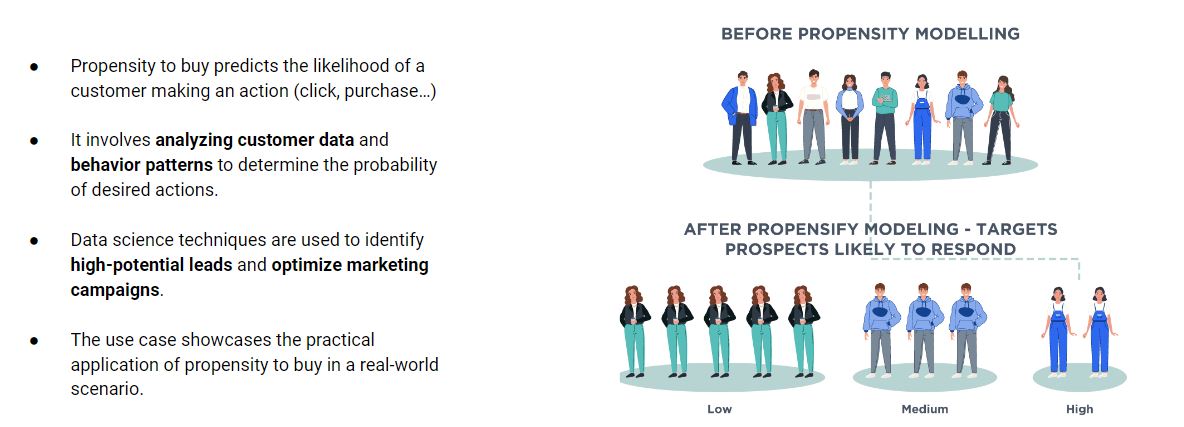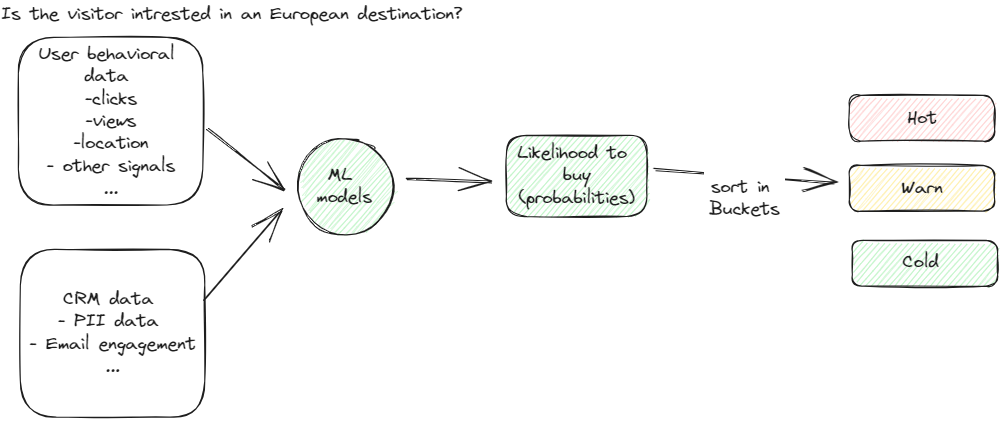Project overview:
In the realm of online advertising, the challenge of delivering relevant and engaging ads to website visitors is paramount. The era of indiscriminate ad bombardment is long gone, as modern users demand personalized and meaningful content. This shift in user expectations has highlighted the need for propensity modeling, a crucial step in the advertising pipeline.
Before the advent of propensity modeling, ads were often served with low relevance, resulting in disengaged visitors and ineffective marketing campaigns. Imagine a scenario where an e-commerce website visitor, interested in fashion, is repeatedly exposed to ads promoting automotive parts – a clear mismatch that not only fails to capture the user’s attention but also wastes precious ad inventory.
To tackle this problem, our project harnessed the power of Google Analytics data as well as data from the CRM. By leveraging this wealth of information, we aimed to predict the interests and preferences of website visitors and clients. Propensity modeling became the key to understanding individual behavior, allowing us to anticipate what products or services might pique interest.

Introduction to propensity modelling

Example of data that could be used to predict prospect interest
Objectives:
- Optimize ad targeting by delivering the right marketing campaign to the right visitor
- Leverage the predictive capabilities of machine learning model
- Unlocked the potential to enhance user engagement, boost conversion rates
- Maximize the return on advertising investment
Impact:
With the invaluable insights derived from our machine learning model, which continuously updates customer scores and segments, marketers now possess a powerful tool. They can craft finely-tuned recommendations and make data-driven decisions regarding which audience to target and how to tailor their messaging.
This capability extends beyond recommendation formulation; it enables marketers to closely monitor engagement and conversion metrics on ML powered segments. By doing so, they can fine-tune their strategies and decisions quickly, ensuring that their marketing efforts remain dynamic, responsive, and aligned with the evolving needs and preferences of their audience.
Technologies:
Pyspark, databricks, Google analytics, Airflow, Mlflow